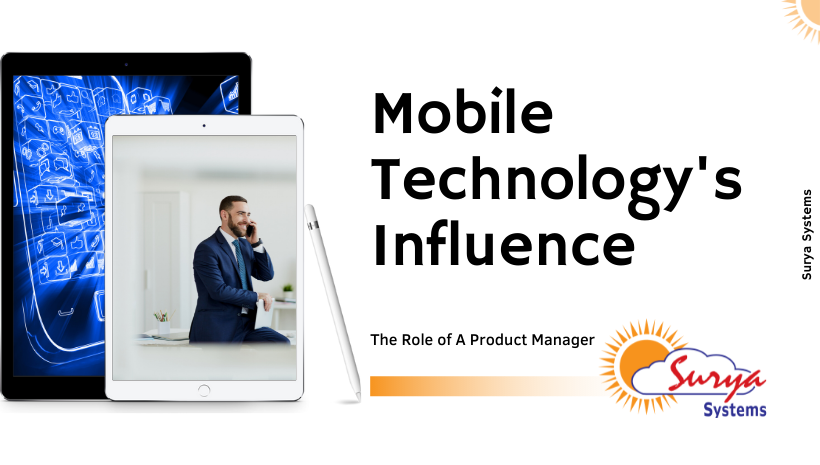- December 6, 2021
- Posted by: Sean Cooper
- Category: Technical Expertise

The Role of A Product Manager:
Technology is changing, and this is impacting product strategy. Mobile devices have become so ubiquitous that it’s no surprise that some software developers have decided to specialize in mobile specialties. Our app development company has already witnessed the trend with designers, marketers, salespeople, and developers. In particular, we’ve noticed how this profoundly affects the role of product managers.
New Product Roadmap for Mobile Apps:
The use of mobile-based apps is on the rise in society. According to ComScore, a majority of Americans are consuming digital media through mobile applications. This can also be seen in the increase in sales of portable consumer electronics. Due to the increasing number of applications, more products are made with substantial mobile components.
This has had a significant impact on the development of digital product roadmaps and the role of product managers. Some applications are only available on mobile devices, as companies tend to find it a more convenient choice that aligns with their target audience and business strategy.
Let’s look at the product manager role:
Mobile Product Management:
Many organizations don’t understand the role of Mobile Product Managers (MPMs), particularly B2B companies that do not create applications for large populations. Moving from a traditional product management role to MPM is challenging, but many managers do it on cutting-edge technology.
Let’s talk about product managers in general before we discuss how mobile is changing their role.
An overview of the role of a product manager:
A manager is an essential part of every software product. This is the person responsible for identifying and defining the end-user. If a product group were an orchestra, its product manager would be its conductor. The product roadmap would be the music sheet.
Product managers are people with technical backgrounds. They should have specialized knowledge and comprehend how software products work, down to the code. They should be proficient in multiple technologies and disciplines, but most importantly, they should understand development projects.
For instance, your product manager should have intelligent conversations about system architecture, User Experience, programming, and cloud computing. But they should also have a capable understanding of “softer” topics like customer success and user onboarding.
What does a Mobile Product Manager do?
Like traditional product managers, the role of a mobile product manager is vast. Mobile project managers are responsible for overseeing the building, measuring, optimizing, and planning of mobile applications. They create and launch a functional product and then adjust it according to customer feedback and market conditions.
Difference between Mobile Product Manager & Traditional Product Manager:
The following are some of the ways that a mobile product manager (MPM) is different from a traditional product manager:
The MPM is limited in features and uses functional wireframes:
Mobile apps are much simpler than desktop and web applications. The user is only presented with a simple user interface (UI). Behind the scenes, there might be more going on than the user can see. The application needs to function well in very little space. This requires that you focus laser-like on the app’s purpose. Designers and developers often try to minimize the mobile app’s size to have a better experience.
Every product manager is familiar with wireframes. They are crucial for organizing information as well as the layout of an app. Wireframes for mobile apps are required to show a mobile app’s fluidity, movement, and orientation.
Additionally, because an app is small, the MPM has to restrict features to those that best serve the app’s purpose. It would be great to have a component that is quick and easy to add for 5%. While it might work in a web app, it is just too distracting for mobile users. These are the situations MPMs need to be sensitive to.
The operating systems constrain the product:
Naturally, the functionality of a mobile application is limited to its device’s OS. The MPM should be familiar with the chosen platform (iOS/Windows/Android, etc.). This will help the MPM understand how the application will function and be developed.
Apple and Google both want their users happy, placing design guidelines and functional conventions onto application developers. Follow their guidelines.
Your mobile platform’s lifecycle is another factor that affects your application. Mobile operating systems have less control than desktop platforms. Google can make significant changes to Android that could affect your app. In this case, you may be required to spend additional development time.
You can try to counter this by creating an app’s long-term roadmap that will outline the evolution of your app. This will allow you to be ready for potential changes. It is best that you stay informed about the latest plans for Apple and Google’s mobile platforms. Your development team must have the ability to update your application quickly. This will allow you to benefit from new features, API, technologies like Machine Learning, and developer tools which make work more productive. You don’t want the risk of not knowing what the next steps are in the development process.
The increased attention is given to new metrics:
Mobile Product Managers need to be familiarized with specific new metrics that traditional products managers never have to worry about. This is especially true if the app is your organization’s first experience with cloud-based technology.
These metrics should be familiar to a mobile product manager.
- Users
- Session length
- Session Interval
- Screenflow
- Time in-app
- Acquisition
- Lifetime value
- Cohort retention
These metrics all refer to the likelihood for the user to use the app multiple times. An MPM’s job includes creating an app that encourages user adoption.
In some sense, the Mobile Product Manager will become a marketer; marketing campaigns have become integrated with app development. The marketing team will be looking for tools such as push notifications and transactional emails. Clear interfaces, promotional advertising in the app, integrations with other applications and solutions, and integrated marketing campaigns.
Mobile product managers oversee iterative development cycles:
There is no way for a product manager to create an iterative product in an Agile environment. Apps are continuously updated and refined to customer feedback, analytics, user studies, and other metrics. Your MPM may have to recognize in some cases when or if your app needs to pivot to another user or a new solution.
You don’t have to respond to bugs. Building an iterative software product does more than fix bugs. It means using data to create a customer-driven product that acutely addresses the needs of your user base.
The MPM is responsible for evaluating feedback and drawing insights. These insights – the learning part – are crucial steps in the process. If the MPM hasn’t read The Lean Startup, they should right away.
Conclusion:
Mobile apps and devices have already transformed the world. However, specialty occupations are just beginning to catch up. Mobile Product Management will become more relevant over time. Standardizations and best practices will emerge, and your app needs reflect that. Make sure to work with a trusted app development company that understands the intricacies of mobile app development.
